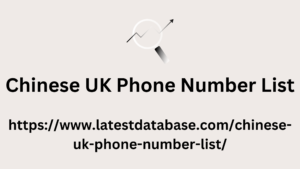Post by account_disabled on Mar 11, 2024 0:23:37 GMT -7
And now let's see together some practical examples of how the application of SMART objectives to marketing strategies allows you to achieve your marketing, communication and commercial objectives. Case Study 1: Increase in online sales for a fashion e-commerce Initial Situation: A fashion e-commerce company was facing a stagnation in online sales and wanted to increase its revenues. SMART Goal: Increase online sales by 20% within the next 12 months by improving the user experience on the website and increasing targeted digital marketing campaigns.
Action: The company revised its website design to Chinese UK Phone Number List navigability and page loading speed. It also implemented a content marketing strategy focused on social media and Google Ads, specifically targeting its target audience. Result: After 12 months, e-commerce recorded an increase in online sales of 25%, exceeding the initial goal. Data analysis showed a significant improvement in customer satisfaction and engagement on social channels. Case Study 2: Improving customer retention for a subscription service Initial Situation: A company offering a monthly subscription service through its e-commerce site was experiencing a high unsubscribe rate after the first three months of subscription.

SMART Goal: Reduce churn (unsubscribe) rates by 30% within six months by improving customer service and personalizing offers for subscribers. Action: The company implemented a real-time feedback system to gather customer feedback and introduced a loyalty program that offered exclusive benefits to long-term subscribers. Result: The churn rate decreased by 35% within the established deadline, thanks to increased customer satisfaction and the perceived added value of the loyalty program.
Action: The company revised its website design to Chinese UK Phone Number List navigability and page loading speed. It also implemented a content marketing strategy focused on social media and Google Ads, specifically targeting its target audience. Result: After 12 months, e-commerce recorded an increase in online sales of 25%, exceeding the initial goal. Data analysis showed a significant improvement in customer satisfaction and engagement on social channels. Case Study 2: Improving customer retention for a subscription service Initial Situation: A company offering a monthly subscription service through its e-commerce site was experiencing a high unsubscribe rate after the first three months of subscription.

SMART Goal: Reduce churn (unsubscribe) rates by 30% within six months by improving customer service and personalizing offers for subscribers. Action: The company implemented a real-time feedback system to gather customer feedback and introduced a loyalty program that offered exclusive benefits to long-term subscribers. Result: The churn rate decreased by 35% within the established deadline, thanks to increased customer satisfaction and the perceived added value of the loyalty program.
